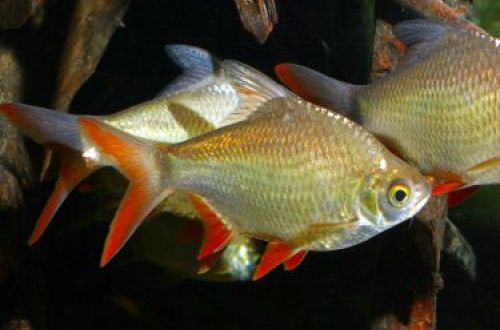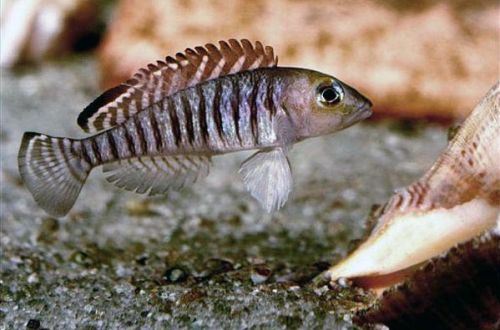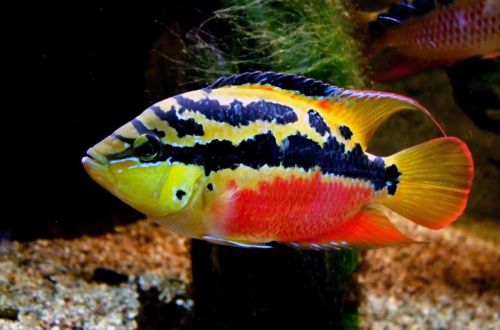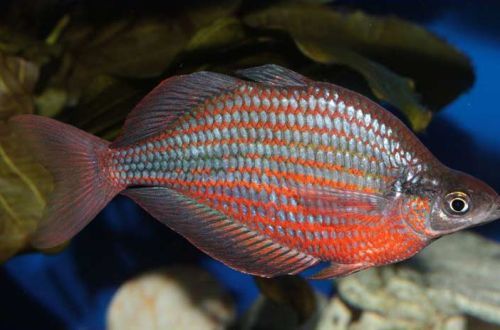
red-tailed barb
The red-tailed barb, scientific name Barbonymus altus, belongs to the Cyprinidae family. A large and hardy fish, reaching a length of 20 cm, will become an adornment of large aquariums, often purchased in an office, in business offices – the barbus is clearly visible to others and at the same time does not require special conditions of detention, thereby becoming a wonderful addition to the interior.

When buying a fish, you should be careful, because it has a close relative, almost identical in appearance, but twice as large – the bream-like barbus reaches a length of 35 cm, which will cause problems with keeping even in a large aquarium. Juveniles of both fish are often sold together, so in order not to accidentally get a giant, carefully look at the fins, the Red-tailed barbs have red fins without any dark strokes, and the color of the body has a golden hue.
Habitat
The red-tailed barb comes from Southeast Asia in the Mekong, Chao Phraya and Mun river basins, flowing through the territories of modern Thailand, Vietnam, Laos and other countries. These cyprinids prefer to swim in the water column of large and medium-sized rivers, but they can often be found in streams and ditches of human settlements. During the rainy season, fish migrate to flooded forests, fields, where they intensively feed and lay eggs, after which they return to the rivers. When the water begins to subside, the fry that have appeared rush into the rivers.
In nature, a fish eats almost everything that fits in its mouth: algae, plant debris, insects, invertebrates, small fish. Living near human settlements, they feed on waste thrown into the water.
Description
The barb has a large (up to 20 cm) laterally compressed body with a rather high back and a forked tail. The natural predominant color is silver or golden yellow. All fins and tail are characteristic red. In adult fish, the dorsal fin often has black markings along the edges in the form of a line or spot.
Food
The fish are omnivores, they will consume all types of live, frozen, vegetable and dry industrial feeds. The optimal balance is achieved by combining dry food and meat products (bloodworm, tubifex, earthworms, shrimp pieces). Herbal supplements are required at least 3 times a week, such as chopped lettuce, spinach or dry vegetable granules.
It is enough to feed once a day, but make sure that all the food is eaten within 5 minutes, the rest should be removed.
Maintenance and care
Successful maintenance is possible only in a large aquarium of about 400 liters. Since fish produce a lot of waste, a powerful filter system is required, such as an external canister filter, internal filters may not be able to cope. It is recommended to replace part of the water twice a month (at least a quarter at a time).
In decoration, use only a strong, stable decoration so that the fish cannot destroy it. Plants need large with a powerful root system and hard leaves, sandy soil with scattered smooth stones and pebbles. Pieces of wood or snags will perfectly complement the decor.
An active fish that prefers the community of its own kind. The red-tailed barb is not an aggressive fish, but will prey on small neighbors, perceiving them as food. Also, it should not be kept together with slow and secretive fish, they will experience unnecessary stress due to the activity of barbs.
As neighbors, species similar to it in size and temperament should be selected, it is recommended to keep at least 5 individuals in a group, otherwise changes in behavior occur, the fish can become either aggressive or shy and shy.
Breeding / breeding
Breeding fish of this size in a home aquarium is very difficult and, as a rule, such experiments are not carried out. The fish are successfully grown in specialized commercial nurseries and further the fry are supplied to retail chains.
Diseases
fish are distinguished by high endurance, in favorable living conditions, outbreaks of diseases are extremely rare. Read more about symptoms and treatments in the Aquarium Fish Diseases section.





